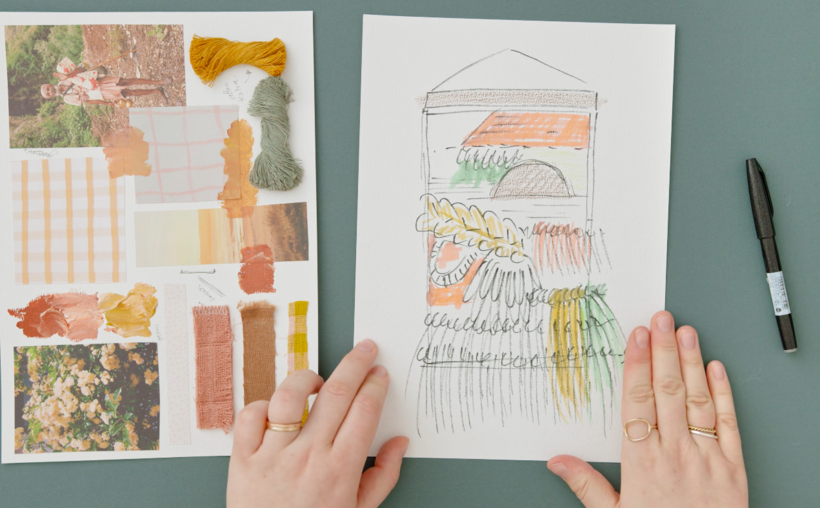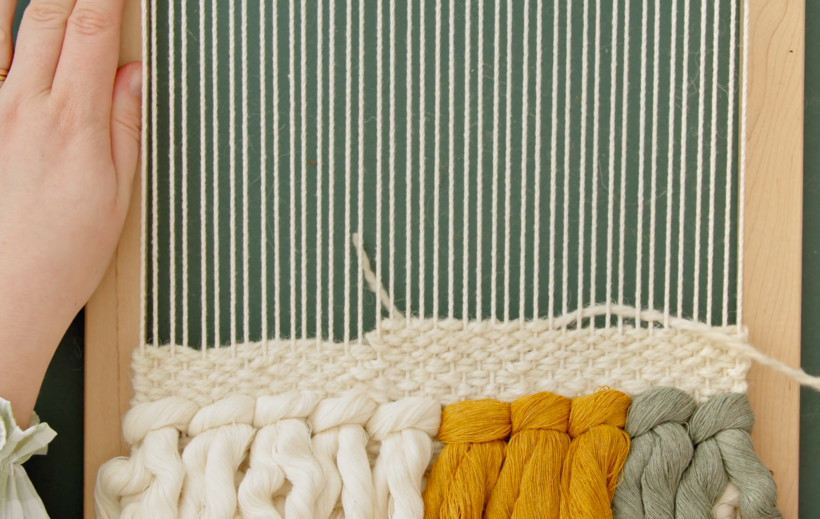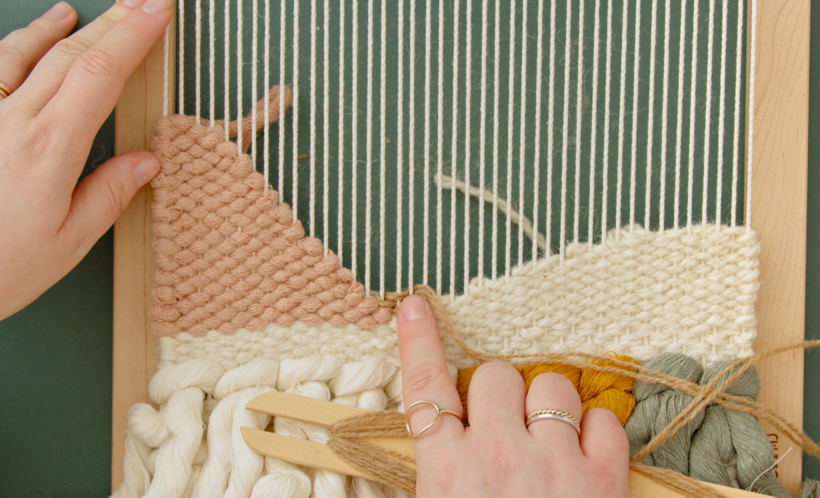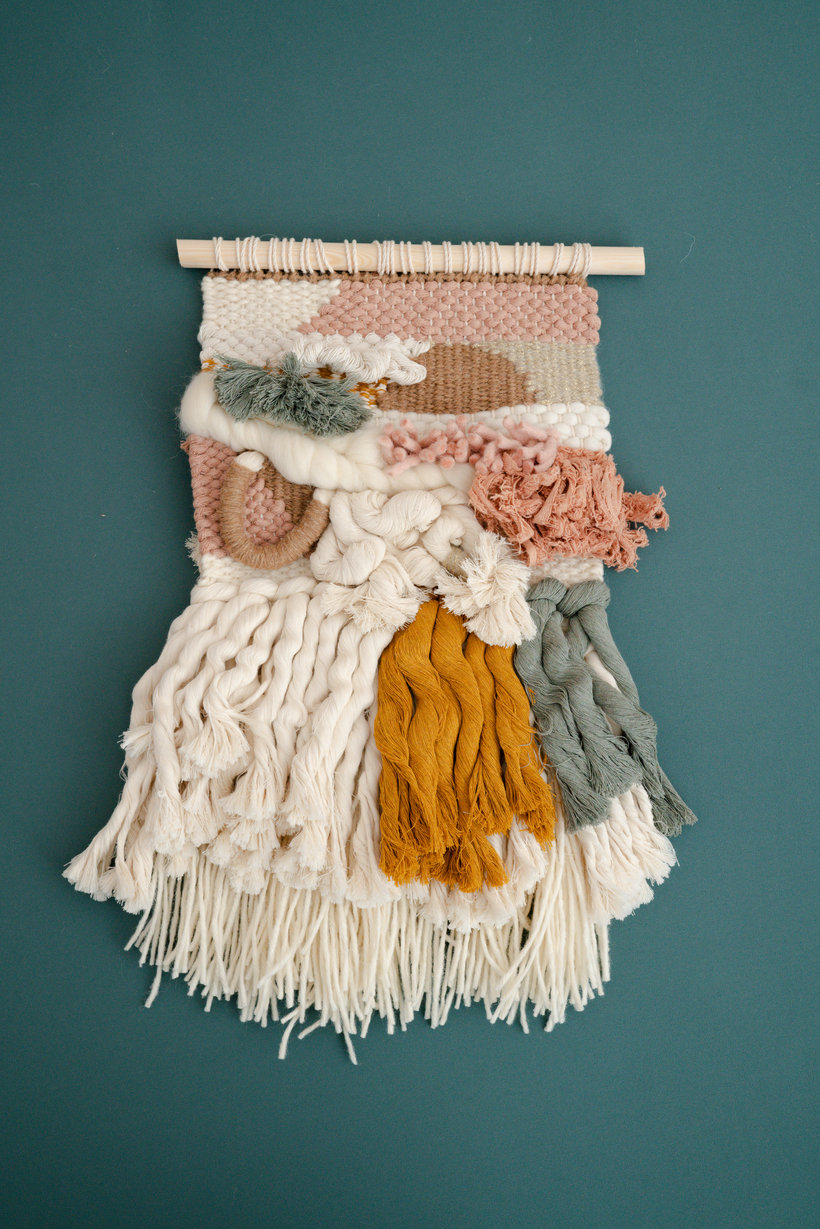Hand Weaving Techniques for Beginners
Course final project
A course by Lucy Rowan , Fiber Artist and Weaver
About the final project for: Hand Weaving Techniques for Beginners
Hand Weaving Techniques for Beginners
“I hope that you have enjoyed this course and that you have had fun exploring the art of weaving. I hope you have managed to complete a beautiful weave in your unique style using the skills I have shown you. We began by looking into how to plan and design your tapestry. You created beautiful textural mood boards, looking at different landscapes and colours to help you come up with a colour theme and where would like your wall hanging to go. You then went on to sketch out your design. Don’t forget that there are templates for your mood boards and weave sketches in the attachments. It helps with collecting all your ideas together to have a design to work from.




Partial transcription of the video
“So now we've reached the end of the Domestika course. I really hope you've enjoyed the tips and tricks that I've shared with you. Remember to have fun in the process when you're creating your beautiful wig. If you follow the lessons, you'll see how easy it is to create your own tapestries. I want you to be original and creative when uploading your own final project. Share me the steps of your weaving process. starting with the preparation. I want to see your mood boards and how you sketch up your design using your chosen color palette. When you start the process of warping your loom, Rememb...”
This transcript is automatically generated, so it may contain mistakes.
Course summary for: Hand Weaving Techniques for Beginners
-
Category
Craft -
Areas
Arts & Crafts, Decoration, Fiber Arts, Textile Design, Weaving

Lucy Rowan
A course by Lucy Rowan
Lucy is a Brighton-based fiber artist specialized in weaving and punch needle embroidery. She is completely self-taught and comes from a creative family that has always encouraged her to create. Her father, a self-taught carpenter, builds the looms Lucy uses to teach workshops across the UK.
In addition to her craft work and workshops, she has written tutorials for magazines as well as her own craft books. She has done various commissioned, and has been featured in Mollie Makers Magazine. She also runs her own online shop, Peas and Needles.
- 100% positive reviews (148)
- 2,952 students
- 21 lessons (4h 17m)
- 31 additional resources (17 files)
- Online and at your own pace
- Available on the app
- Audio: English, German, Spanish, Spanish (Latam), French, Indonesian, Italian, Dutch, Polish, Portuguese, Romanian, Turkish
- Spanish · English · Portuguese · German · French · Italian · Polish · Dutch · Turkish · Romanian · Indonesian
- Level: Beginner
- Unlimited access forever
Category
Areas





